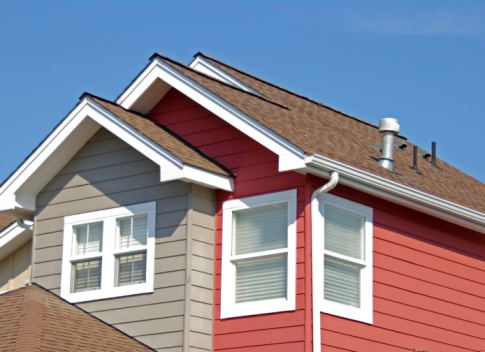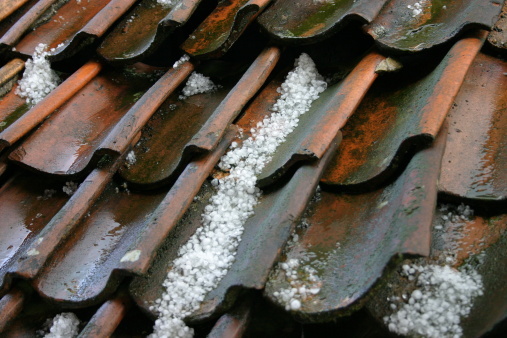Sometimes April showers bring May flowers — but they’re just as likely to cause serious damage to your roof and landscaping. If you’re not sure whether your home is ready for the onslaught, make sure you understand what’s at stake and what you can do to optimize your odds for a happier spring (and summer).
Heavy Rains Mean Roof Repairs
You’ve no doubt seen bits of dark-colored grit in your gutters from time to time. Those specks are granules that have worn off of your asphalt shingles. This is a normal phenomenon that occurs over time as the elements rub against the shingles to cause erosion. Rain, of course, is a leading cause of shingle erosion — and when the spring storms gather, the process can get speeded up dramatically. Take a close look at your gutters — and your shingles — after the next rainstorm to see whether you’ve got a serious erosion issue. If so, it’s most likely time to replace at least some of the shingles.
Spring is also tornado season, but your roof doesn’t have to be hit by a twister to experience significant wind damage. A severe storm can actually rip entire shingles away from your roof, leaving the underlying structures exposed. Rain water then seeps down around the edges of the remaining shingles — and the next thing you know, you’ve got rotten support beams, a wet attic, water spots on the ceiling, and other expensive repair issues. Don’t let the damage escalate to that level; if you see even a single missing shingle following a storm, schedule the necessary roof repairs immediately.

Standing water can do lots of harm even to a roof that still has all its shingles. If your gutters are habitually clogged or dirty, you can expect them to overflow in a heavy rainstorm. Some of that water will pour onto your lawn, eroding the soil, drowning the plants, and possibly wrecking your beautiful landscaping job. The rest of it will wash back up onto the roof to do the kinds of damage mentioned above. If your roof can’t dry out properly because of these runoff issues, you may also accumulate a quantity of moss on it — another phenomenon that can hasten the deterioration of roof surfaces — and the roof may become home to termites and other destructive pests.
A Hail of a Mess
Rain and wind are bad enough for an aging roof with drainage problems. Hail, however, is downright abusive. Hailstorms start to pop up in the spring months, and when solid chunks of ice the size of dollar coins or golf balls are flying through the air, damage will result. The first thing you absolutely must do in a hailstorm, of course, is to take cover so you don’t get injured. Your roof has no such option, but you may not notice any obvious signs of hail damage following the storm. Don’t let that stop you from scheduling a roof inspection!
Hail damage isn’t always obvious until its aftereffects make themselves known — in the form of additional moisture or structural damage. If your metal gutters are all dented up from the hail (aluminum is a particularly vulnerable material), they may not be able to do their job optimally anymore, in which case you’ll need to replace them.

The smartest course of action is to schedule a roof and gutter inspection automatically after every serious rain, wind, or hail incident. Even if you’ve escaped the storms so far this year, it would be wise to have your roof inspected and any repairs made before the water arrives. Call Moonworks at 1-800-975-6666 to arrange for an inspection. You’ll rest a lot easier during April showers, May hailstorms, and any other big events Mother Nature decides to hurl at you throughout the year!
